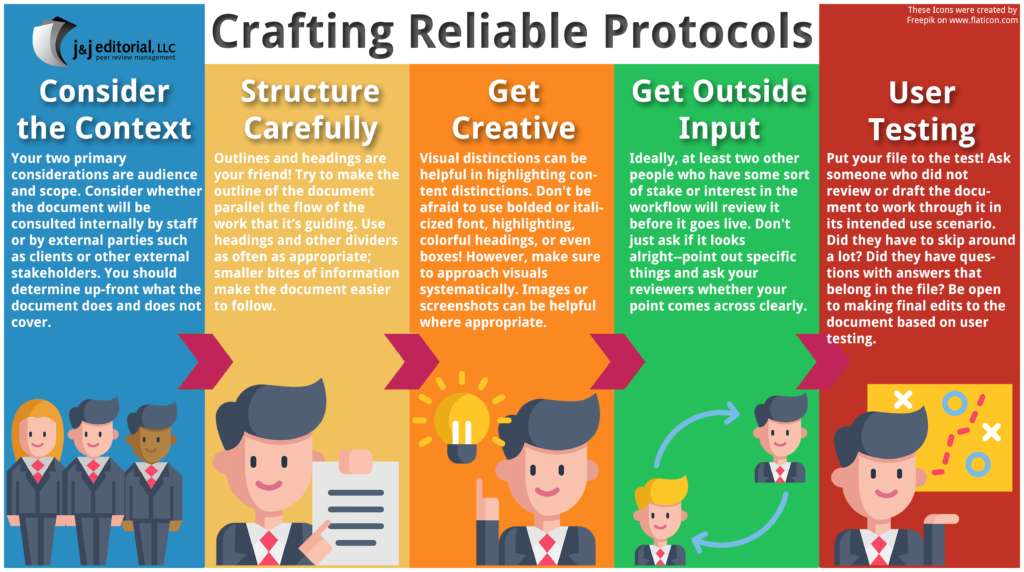Like so many offices, J&J relies heavily on workflow protocols and checklists in our day-to-day operations. Whether we’re managing peer review, production, copyediting, or publishing systems, a well-drafted workflow document is beneficial for everyone involved. Useful workflow documentation eliminates potential questions, guides its user through a process clearly, and is an essential source of knowledge transfer. Below are some tips to take your documentation from “existent” to “excellent”:
1. Consider the context
Two primary considerations are important here: audience and scope. Who will read the document? At J&J, we’re considering whether the document will be consulted internally by assistant- or editor-level staff, or by external parties such as our clients or reviewers/academic editors.
2. Structure carefully
A well-organized workflow protocol can be a resource as well as an instruction manual. Outlines and headings are your friend! Try to make the outline of the document parallel the flow of the work that it’s guiding, especially if you’ve optimized the process. Use headings and other dividers as often as appropriate; smaller bites of information make the document easier to follow. Finally, be sure to keep different types of information separate. Consider adding an appendix or a glossary if you find yourself constantly pausing for asides or definitions.
3. Get creative
Visual distinctions can be helpful in highlighting content distinctions. Don’t be afraid to use bold or italicized font, highlighting, colorful headings, or even boxes! However, make sure to approach visuals systematically. Images or screenshots can be helpful where appropriate, but think back to your context considerations–if the file is intended for editorial staff use, do you really need to provide a screenshot of the log-in page of Editorial Manager?
4. Get outside input
Ideally, at least two other people who have some sort of stake or interest in the workflow will review it before it goes live. Don’t just ask if it looks alright–point out specific things and ask your reviewers whether your point comes across clearly.
5. Testing
Put your file to the test! If you can, have someone who did not review or draft the document work through it in its intended use scenario. Did they have to skip around a lot? Did they have questions with answers that belong in the file? Be open to tweaking and making final edits to the document based on some user testing.

Finally, realize that protocol development is an iterative process! Be proactive with upkeep and you’ll have a protocol that stands the test of time; although as we know, no protocol is ever final.
Article contribution by J&J Production Client Manager Julia Boyle.
